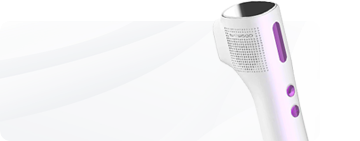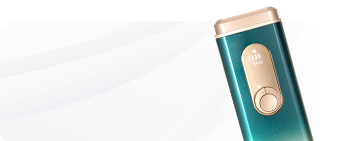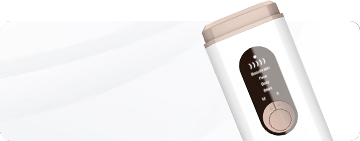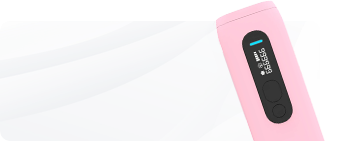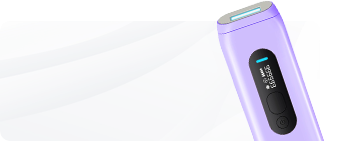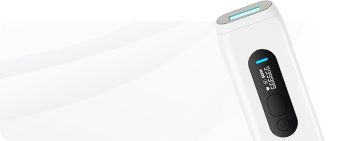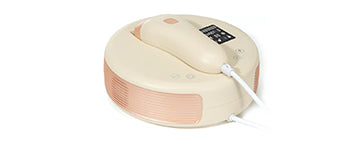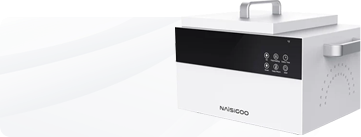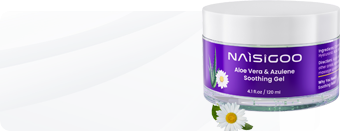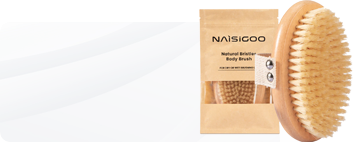Intense Pulsed Light (IPL) therapy allows you to remove body hair at home, providing long-lasting but not instant results. Achieving the perfect balance with IPL is crucial; if used correctly, it can leave your skin baby soft, like achieving dreamy underarms.
However, IPL requires multiple sessions to effectively reduce unwanted hair, and using it too frequently can backfire, leading to skin irritation and reduced effectiveness. Overdoing it doesn't just fail to speed up the process—it could make things worse. If you're setting up your treatment schedule and want to use your IPL device safely, we're here to guide you. Let’s discuss if using your IPL device every other day is safe and what the potential risks might be.
How do IPL devices interact with the hair growth cycle for hair removal?

Anagen: This is the active growth phase where hair is connected to the root and receives blood supply from the follicle. About 80-90% of hair is in this phase at any time, making it the best target for IPL treatment. IPL works by destroying the blood supply to the hair follicle, effectively killing it. This phase typically lasts 20-30 days.
Catagen: This transitional phase moves hair from active growth to a resting state. Hair begins detaching from the root, reducing the effectiveness of IPL treatments. Only about 5% of hair is in this phase, which lasts around 10 days.
Telogen: During this dormant phase, hair is completely detached from the follicle but hasn't fallen out yet. While IPL can burn the hair, it can't reach the follicle since the hair is no longer attached, making IPL less effective.
Exogen: This is the final phase where the fully grown hair falls out and is replaced by new hair entering the anagen phase. IPL is ineffective during exogen because the hair is naturally shed, and only a few hairs are in this stage at any time.
How many IPL sessions are needed for long-lasting hair removal results?
The number of IPL sessions you need can vary depending on the device used, as each has different energy outputs and recommended treatment frequencies. We'll use the Naisigoo The Shiner hair removal device as an example to estimate how many sessions you might need.
0-4 Sessions
within 2 weeks, twice a week
After four sessions, you can expect up to a 60% reduction in hair count and regrowth. At this point, you’ll notice the hair becoming softer.
4-8 Sessions
the 3-5 weeks, once a week
After eight sessions, you can expect up to an 84% reduction in hair count and regrowth. You'll notice the hair follicles shrinking, the roots beginning to shed, and a decrease in hair density.
After 12 Sessions
the 6-8 weeks, once a week
After 12 sessions, you can expect up to a 97.82% reduction in hair count and regrowth. Most individuals achieve longer-lasting, nearly hair-free smooth skin. Maintenance treatments are typically done every 1-2 months as needed after the initial eight weeks.
Is it safe to use an IPL hair removal device every other day?
Using an IPL hair removal device every day or every other day is not advisable. It's not only less effective but also potentially unsafe and could increase your costs.
For optimal results, adhere to a less frequent treatment schedule. IPL works best when hair is in the growth phase; treating your skin too often may cause the hair to become dormant, reducing the effectiveness of the IPL treatments.
How many times a week can you use home IPL?
The treatment schedule for an IPL device varies based on the manufacturer's guidelines, which are determined by extensive testing, safety standards, and certifications specific to the device's features.
Typically, you can use a home IPL device twice a week for 8 weeks, totaling about 8 sessions per month.
After completing the initial treatments, you might need touch-up sessions every few months to keep your skin smooth. If you find you don't need a session during these maintenance periods, it's okay to skip it. Just pay attention to your body's hair growth cycles.
What are the effects of overusing an IPL hair removal device?
Skin Irritation: Typical use of an IPL device might result in short-term redness and slight discomfort, but overuse can severely irritate the skin, causing extended periods of redness, pain, itching, and heightened sensitivity to sunlight and some products.
Burns and Blisters: Ignoring skin irritation and persistently using the IPL device can cause burns and blisters, particularly if the device is used repeatedly on the same area. The light's conversion to heat needs careful handling to avoid burning the skin.
Scarring and Crust Formation: Excessive use of IPL may lead to serious skin damage, manifesting as crusts and scars from repeated burns and blisters, which can become permanent if not properly treated.
Pigmentation Changes: IPL can alter melanin production, sometimes stimulating or inhibiting these cells, which can result in patchy skin coloration, either darkening or lightening areas of the skin.
Unexpected Hair Growth: Contrary to its purpose, frequent IPL sessions might actually stimulate hair growth by disrupting the hair’s natural growth cycle, intensifying the problem of unwanted hair.
Exacerbation of Skin Conditions: For individuals with skin conditions like psoriasis or eczema, moderate IPL use is typically safe; however, excessive use can worsen these conditions.
Infection Risks: Using an IPL device too often can weaken the skin’s natural barrier, increasing susceptibility to infections from bacteria and other microbes.
Healing Delays: Adverse reactions from an IPL device should be a signal to cease use and consult a healthcare provider. Ignoring these symptoms and continuing treatment can delay the skin's recovery.
Conclusion
Using an IPL hair removal device is straightforward, but it’s easy to overdo it in the quest for quicker results. However, using the device daily or every other day is not advisable, as it can lead to skin irritation, allergies, pigmentation changes, infections, burns, blisters, delayed healing, and scarring.
